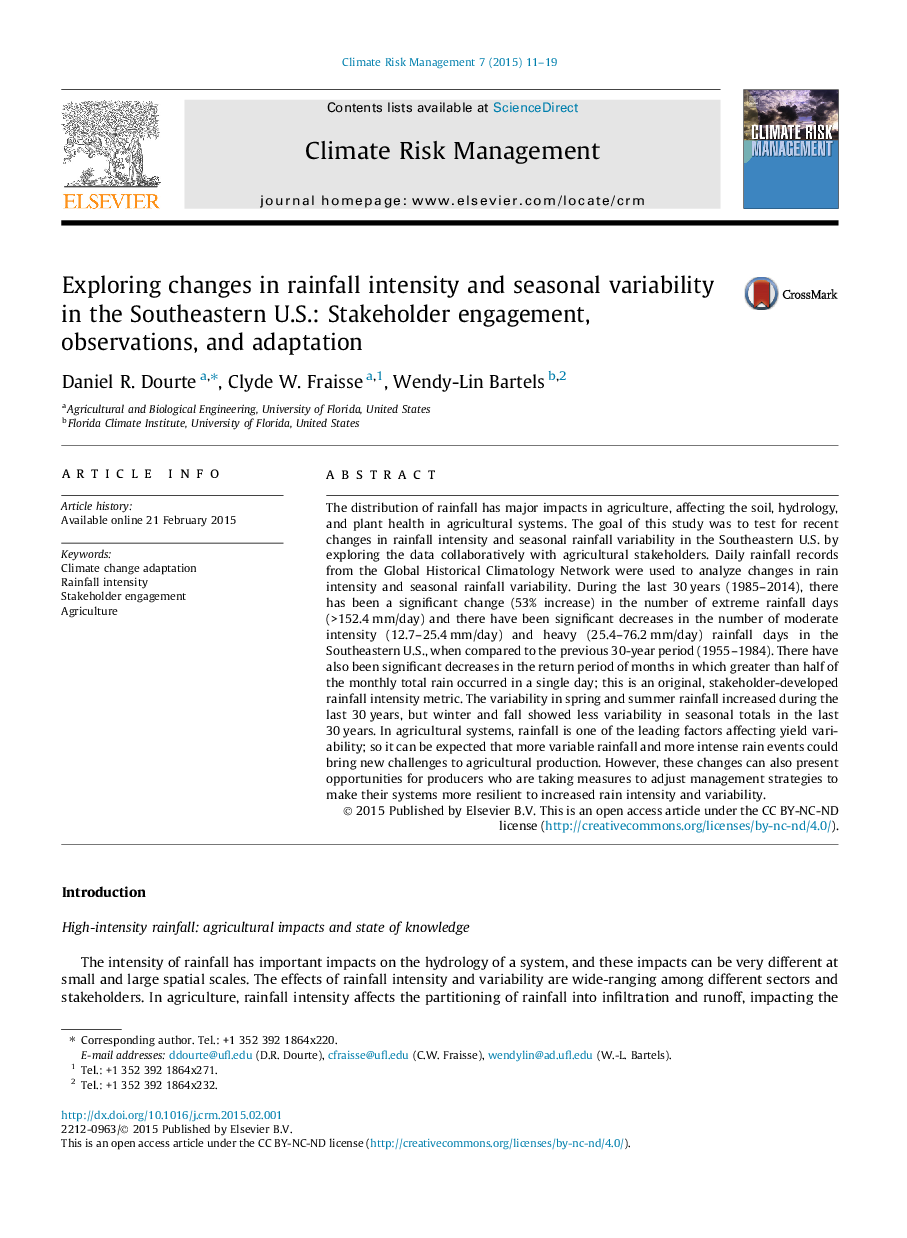| کد مقاله | کد نشریه | سال انتشار | مقاله انگلیسی | نسخه تمام متن |
|---|---|---|---|---|
| 1051271 | 1484885 | 2015 | 9 صفحه PDF | دانلود رایگان |

• High-intensity rains can be costly in agricultural systems due to soil/nutrient loss.
• There have been significantly more extreme rain events in the Southeastern U.S.
• A new monthly rain intensity metric is introduced based on stakeholder input.
• Stakeholder engagement can help improve the links between research and practice.
The distribution of rainfall has major impacts in agriculture, affecting the soil, hydrology, and plant health in agricultural systems. The goal of this study was to test for recent changes in rainfall intensity and seasonal rainfall variability in the Southeastern U.S. by exploring the data collaboratively with agricultural stakeholders. Daily rainfall records from the Global Historical Climatology Network were used to analyze changes in rain intensity and seasonal rainfall variability. During the last 30 years (1985–2014), there has been a significant change (53% increase) in the number of extreme rainfall days (>152.4 mm/day) and there have been significant decreases in the number of moderate intensity (12.7–25.4 mm/day) and heavy (25.4–76.2 mm/day) rainfall days in the Southeastern U.S., when compared to the previous 30-year period (1955–1984). There have also been significant decreases in the return period of months in which greater than half of the monthly total rain occurred in a single day; this is an original, stakeholder-developed rainfall intensity metric. The variability in spring and summer rainfall increased during the last 30 years, but winter and fall showed less variability in seasonal totals in the last 30 years. In agricultural systems, rainfall is one of the leading factors affecting yield variability; so it can be expected that more variable rainfall and more intense rain events could bring new challenges to agricultural production. However, these changes can also present opportunities for producers who are taking measures to adjust management strategies to make their systems more resilient to increased rain intensity and variability.
Journal: Climate Risk Management - Volume 7, 2015, Pages 11–19